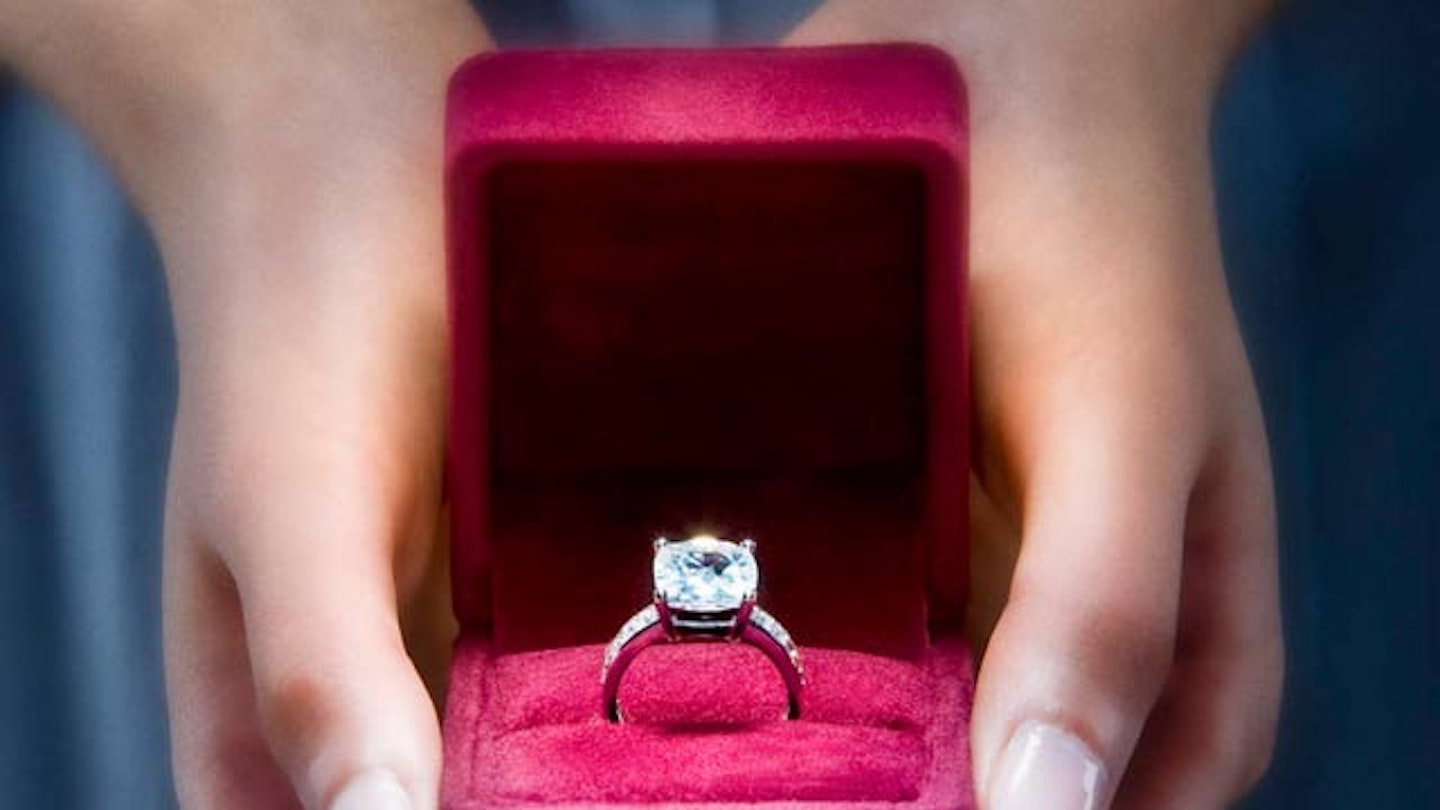Every bride-to-be has a ring story – whether it’s the tale of how he smuggled it into the champagne glass/ pudding/Chanel 2.55 bag (a girl can dream); a family history about how great-great-granny handed the heirloom down over the generations, or even some light-hearted ‘there’s no way that’s the one’ foot-stomping anecdote.
The ‘what to do when you don’t need the ring any more’ story is a less common source of dinner-party conversation. If your wedding never happens, can you shove the ring in a drawer and forget about it? And when is the right time to get rid of it? How do you even go about doing it? And honestly, how does it feel? That’s the situation I found myself in this summer, five years after my ex-fiancé broke up with me weeks before our wedding. It was time to stop paying the insurance (while fantasising about a break-in) and find a way of getting rid of the diamond and the emotional baggage.
For a good year after our split, looking down at the physical reminder of my empty dinger, even on good days, had the power to make my stomach sink and my eyes fill with tears. I’d developed a habit during my engagement of rubbing my thumb over the top of the diamond and I’d still reach for it. A micro-second of panic would flood me, before it kicked in that I didn’t wear it any more.
I shut it away in my mum’s house, not wanting it in my flat, scared of the thought of a drunken Charlotte Sex And The City moment – wearing it round the house, sobbing into its reflection. I’d sneak a look at it sometimes when I visited home. It felt like a symbol of failure, a glitzy millstone reinforcing the inner voice telling me I wasn’t good enough.
But slowly, the hurt started to fade, and I stopped punishing myself. In time, I almost forgot about it, until one day I came across the ring under some discarded make-up. Its re-emergence coincided with a period of change in my life. I’d left a permanent job to go freelance and had dreams of writing a novel; it wasn’t only that I could do with the money –
I could do without the ring.
I headed for London’s Hatton Garden, romantic thoughts of charming jewellery shops and olde-worlde craftspeople scurrying around me and my ring in mind. The reality was less fairy tale.
I went into pawnbrokers, encountering ever-desperate people trying to sell fake designer handbags and cheap jewellery. I felt grubby and humiliated as I listened to the staff’s appraisals. Apparently, my ring was poor quality (untrue, it was a Tiffany 0.8 carat VS1 diamond), too well-worn to be worth much (also untrue, it had been worn for just over a year) and I’d be lucky to geta tiny fraction of its worth. I was terrified when a couple I’d seen trying to pawn some knock-off Vuitton started to follow me and struggled not to cry when one shop owner confessed, ‘Don’t sell it to me, love, I deal in desperate people and I can tell you’re not one. Get a taxi home.’
I was about to take her advice when I walked past the last shop I’d planned to go in. It was empty and the girl behind the counter looked friendly and about my age, so I thought I’d make one last attempt at shifting my history. She must have noticed I was upset because she took time to offer me water and make small talk to relax me, reassuring me that it was common for people to pour out their life stories to her – jewellery being so emotive in its nature. There was something about her methodical evaluation that changed my perception of the piece and what it meant to me. She defused the emotion that had built up during this stressful day and, as she talked me through it, I felt a sense of removal from the ring. She offered a fair and reasonable price and told me to go away and return when I’d had a think.
My newfound sense of disconnection meant it was an easy decision to make, and I returned a few days later to sell it to her. I deliberately didn’t open the box for one last look and I was grateful that when she took it from me she didn’t inspect it either.
There was no need to have some kind of long goodbye. My mourning over the relationship had taken place years ago and this was the last piece of the healing process. The money hit my account within an hour and that night I took some friends out for drinks. I hadn’t told anyone what I was doing, but as soon as I revealed what I’d been up to, they all commented on how happy and light I seemed as I spoke about it.
In the longer term, the money means I can take some time out to try and write a novel. One friend told me, ‘It’s your past paying for your future’, and that’s exactly what I hope it’ll be.
READ MORE: Why Millennials Are Ditching Diamond Engagement Rings
READ MORE: The Most Dazzling Celebrity Engagement Rings Of All Time
